Search results for: 'Bronze a'
-
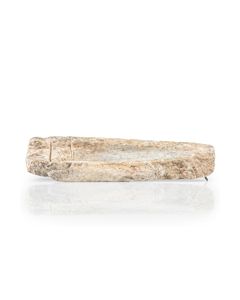 Bronze Age casting mould for a chisel
Bronze Age casting mould for a chiselOne half of a stone mould for bronze casting. The equipment is from a workshop of the 2nd Millennium BC, probably from the Carpathian Basin. From the famous Guttmann Collection. This mould was published in a work by Born and Hansen.
Price: on request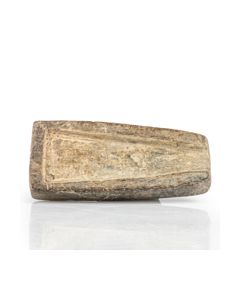 Bronze Age casting mould for a flat axe
Bronze Age casting mould for a flat axeOne half of a stone mould for bronze casting an axe head. The equipment is from a workshop of the 2nd Millennium BC, probably from the Carpathian Basin. From the famous Guttmann Collection. This mould was published in a work by Born and Hansen.
Price: on request Group of Italic brooches and artefacts
Group of Italic brooches and artefactsExciting group of 17 bronze objects. These include an Italian serpentine fibula with large disc head, three early Etruscan brooches, and a bronze sheet with a decorative head.
Price: on request Bronze Age flanged axe
Bronze Age flanged axeWorking axe from the Late Bronze Age of Europe in great condition. Typologically, it is a flanged axe head.
Price: on request Bronze Age flanged axe
Bronze Age flanged axeWorking axe from the Late Bronze Age of Europe in great condition. Typologically, it is a flanged axe head.
Price: on request Neck ring of the Urnfield culture
Neck ring of the Urnfield cultureThis bronze ring is an early variant of a torc. The piece of jewellery was found in Southern Germany and dates to the Late Bronze Age.
Price: on request Palstave axehead with triangle decoration
Palstave axehead with triangle decorationExtremely well preserved piece from a Bronze Age hoard found in Manston, UK. 1400 to 1150 BC. This axe belongs to a very rare type.
Price: on request Palstave axehead with triangle decoration
Palstave axehead with triangle decorationExtremely well preserved piece from a Bronze Age hoard found in Manston, UK. 1400 to 1150 BC. This axe belongs to a very rare type.
Price: on request Flint blade and stone mould
Flint blade and stone mouldInteresting group of two artefacts. A Neolithic flint blade from Egypt and a Bronze Age mould for casting or hammering metal.
Price: on request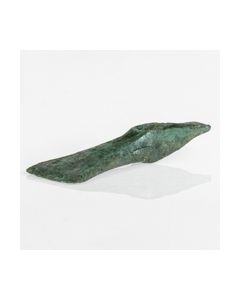 Palstave axehead with decoration
Palstave axehead with decorationExtremely well preserved piece from a Bronze Age hoard found in Manston, UK. 1400 to 1150 BC.
Price: on request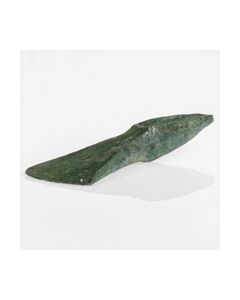 Palstave axehead with decoration
Palstave axehead with decorationExtremely well preserved piece from a Bronze Age hoard found in Manston, UK. 1400 to 1150 BC.
Price: on request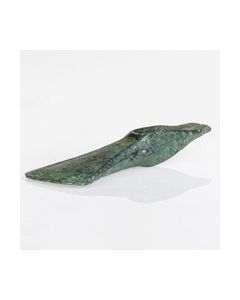 Palstave axehead with decoration
Palstave axehead with decorationExtremely well preserved piece from a Bronze Age hoard found in Manston, UK. 1400 to 1150 BC.
Price: on request Palstave axehead with decoration
Palstave axehead with decorationExtremely well preserved piece from a Bronze Age hoard found in Manston, UK. 1400 to 1150 BC.
Price: on request Palstave axehead with decoration
Palstave axehead with decorationExtremely well preserved piece from a Bronze Age hoard found in Manston, UK. 1400 to 1150 BC.
Price: on request Italic fibula with nice incised decoration
Italic fibula with nice incised decorationLarge bronze brooch of a typical boat-shape from Iron Age Italy. A special feature and rarity are the three links of a chain still hanging on the pin.
Price: on request Early Etruscan fibula
Early Etruscan fibulaThe early Etruscan bronze brooch is characterized by its artistically decorated bow. A find from northern Italy.
Price: on request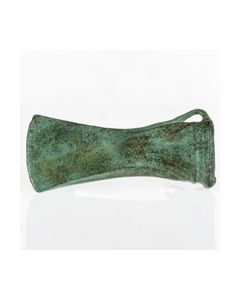 Socketed axe head from Southern Germany
Socketed axe head from Southern GermanyA typical bronze tool of the late Urnfield culture or early Hallstatt culture. It was found near Regensburg in Southern Germany by a voluntary archaeologist.
Price: on request Bronze Age bracelet with incised decoration
Bronze Age bracelet with incised decorationThe jewellery was made in Europe during the 2nd millennium BC. Nice, dark patina.
Price: on request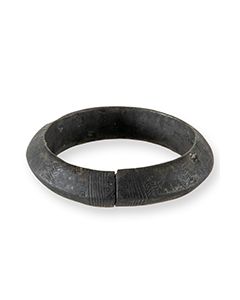 Bronze Age bracelet with incised decoration
Bronze Age bracelet with incised decorationThe jewellery was made in Europe during the 2nd millennium BC. Nice, dark patina.
Price: on request Sword from the European Bronze Age
Sword from the European Bronze AgeWonderfully preserved bronze weapon from the Late Bronze Age around 1200 BC. Of the Reutlingen type, made in the region of today's Germany or surrounding countries.
Price: on request Large decorated violin bow fibula
Large decorated violin bow fibulaImpressive piece of jewellery because of its size and decoration. From Central Europe, made during Late Bronze Age or Early Iron Age.
Price: on request Italic chestplate with fine decorations
Italic chestplate with fine decorationsBronze armour from the fascinating transitional period between the late Villanova culture and the early Etruscans. Decorated with bands of zigzag and swastica.
Price: on request Magnificent neck ring from Greece
Magnificent neck ring from GreeceThe solid bronze ring is beautifully decorated with spiral grooves and punched decoration. An impressive piece from the Iron Age. With expertise from 1987.
Price: on request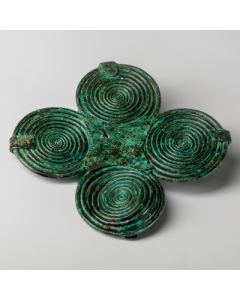 Italic quatrefoil fibula
Italic quatrefoil fibulaExtremely well preserved double spectacle brooch dating to the early Iron Age in Italy. 8th cent. BC. Acquired 1989 at Casa Serodine.
Price: on request Mycenaean pottery stirrup jar
Mycenaean pottery stirrup jarCharacteristic type of vessel for the Mycenaean civilization in Bronze Age Greece. From the peak of Mycenaean pottery production in the 14th century BC.
Price: on request Italic Quatrefoil Fibula
Italic Quatrefoil FibulaExtremely well preserved double spectacle brooch dating to the early Iron Age in Italy. 8th cent. BC.
Price: on request Double spiral pendant from Bronze Age Central Europe
Double spiral pendant from Bronze Age Central EuropeTypical decorative element of a wealthy woman's dress in the European Middle Bronze Age. Several of these spiral pendants were worn around the waist. Similar to belt mounts or charms. 1500 to 1200 BC.
Price: on request Double spiral pendant from Bronze Age Central Europe
Double spiral pendant from Bronze Age Central EuropeTypical decorative element of a wealthy woman's dress in the European Middle Bronze Age. Several of these spiral pendants were worn around the waist. Similar to belt mounts or charms. 1500 to 1200 BC.
Price: on request Cult vessel of the Yortan culture
Cult vessel of the Yortan cultureWonderful double vessel with incised decoration. From the Early Bronze Age of Western Anatolia.
Price: on request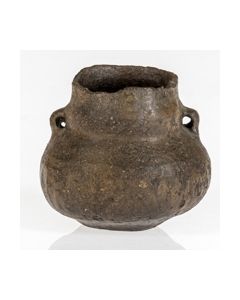 Vessel of the Urnfield culture
Vessel of the Urnfield cultureNicely preserved pottery dating to the Urnfield period, the transition between Bronze Age and Iron Age in Central Europe. Found in Southern Germany. 1200 to 800 BC.
Price: on request Phrygian fibula from the Hattatt collection
Phrygian fibula from the Hattatt collectionBronze fibula from Anatolia around the time of King Midas. The piece is published in two standard works and was on loan to the Ashmolean Museum.
Price: on request Early Villanovan Amphoriskos
Early Villanovan AmphoriskosImpressive impasto vessel with nice decorations. Including TL analysis report.
Price: on request Melon bracelet from the Hallstatt period
Melon bracelet from the Hallstatt periodThe massive bronze bracelet was found in Mintraching, Germany. The piece is published in an archeological report. Around 600 BC.
Price: on request Early Etruscan sanguisuga fibula
Early Etruscan sanguisuga fibulaThe early Etruscan bronze brooch is characterized by its artistically decorated bow. From the collection of Professor Alder-Kissling.
Price: on request Villanovan fibula from the Hattatt collection
Villanovan fibula from the Hattatt collectionBronze brooch of the Italic Iron Age. The piece is published in the standard work "Brooches of Antiquity".
Price: on request Large Villanovan fibula from the Hattatt collection
Large Villanovan fibula from the Hattatt collectionImposing bronze brooch of the Italic Iron Age. The piece is published in the standard work "Brooches of Antiquity".
Price: on request

